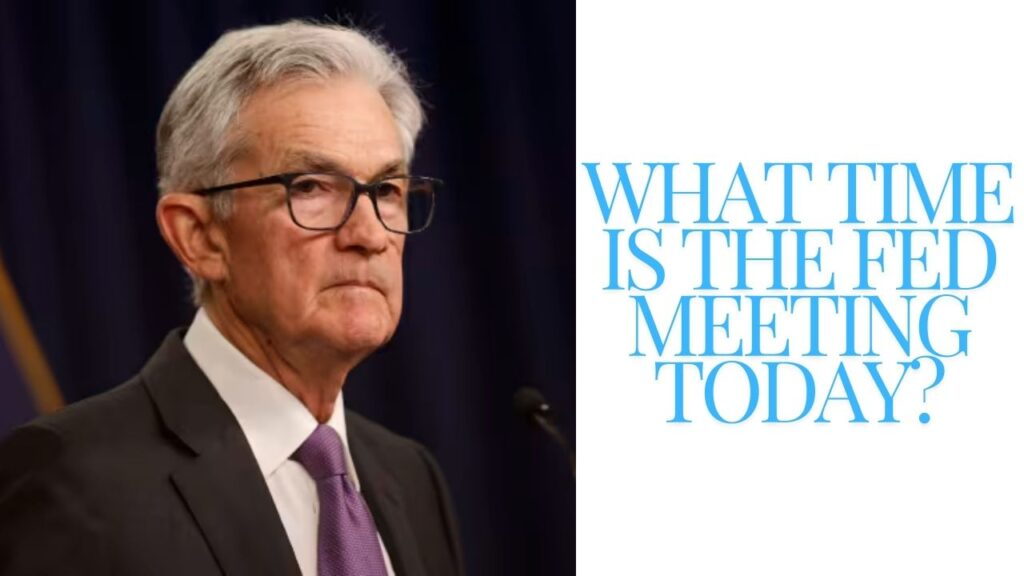At 11:30 PM India time today, the U.S. Federal Reserve (Fed) will unveil its anticipated monetary policy decision and possibly interest rate cut since 2014. Market watchers eagerly anticipate whether a 25 basis point (bps) reduction or a more aggressive 50 basis point cut is implemented by this decision which could impact mortgage rates as well as stock performance worldwide. The Fed decision has far-reaching effects both domestically and globally affecting everything from mortgage rates to stock performance and mortgage costs alike.
Investors eagerly anticipate comments by Federal Chair Jerome Powell following today’s announcement, in anticipation of him offering vital insights into the state of the U.S. economy, inflation trends and employment figures. Market participants in particular await his interpretation as to whether this cut signals an ongoing easing cycle or just temporary measures; his take on inflation issues will also be vitally important given recent unexpected increases due to higher housing and travel costs.
Will There Be a Rate Cut Today?
All eyes will be on the Federal Open Market Committee (FOMC), as its meeting to make decisions regarding rate cuts could mark its first move since 2020. Market analysts and economists generally anticipate 25 basis point cuts; some speculate about 50bps cuts being possible as well. A basis point represents one-hundredth of one percentage point; thus reducing the interest rate by 0.257% with every 25 basis point cut.
Multiple factors are playing into this decision. While headline inflation figures have eased down to 2.5% from 2.9% in July, core inflation (excluding volatile categories such as food and energy ) has seen an uptick due to housing and travel costs; making a drastic reduction less likely as part of their objective of keeping inflation within their 2-percent target range.
However, other economic indicators suggest a decline in economic activity such as unemployment rate and manufacturing data in the U.S. The challenge presented to the Fed when trying to control inflation while supporting growth puts undue strain on them to make an informed decision about whether a rate cut should occur and in what form.
Why Does the Federal Reserve Reduce Interest Rates?
The Federal Reserve reduces interest rates to increase economic activity by making borrowing cheaper, giving businesses and consumers easier access to credit, and increasing spending and investment activity – something currently seen with U.S. manufacturing sector growth slowdowns. This helps the overall economy expand at times when its manufacturing sector shows signs of struggling – as is currently happening with this nation’s manufacturing industry.
The U.S. manufacturing sector shrunk 11 times within 12 months, which indicates lower demand and production levels. A lower interest rate could help stimulate borrowing and investment activity within this industry, providing much-needed support. Furthermore, recent job openings fell to their lowest levels since January 2021 – further suggesting a cooling labour market that may benefit from reduced rates.
However, cutting rates carries risks; too aggressive of an approach could increase inflation by contributing to it exceeding 2% over time – something the Fed must carefully take into consideration in its decisions when cutting rates. It must also carefully weigh both unemployment and inflation data when making its decision.
What Impact Has Jerome Powell Had on Markets?
Fed Chair Jerome Powell’s remarks are often considered the cornerstone of its decision process. Following an announcement, Powell usually hosts a press conference to explain their rationale as well as provide forward guidance regarding future monetary policy initiatives. Markets closely watch these remarks to gain a gauge of where both the U.S. economy and Fed plans are heading.
Today at his meeting with Powell is expected to address issues around inflation, unemployment and potential rate cuts in future meetings. His tone and language may impact domestic and global stock markets greatly – for instance, if Powell signals the willingness of the Fed to cut rates further may boost investor trust leading to a stock rally; conversely, if his words indicate caution may dampen expectations for easier monetary policy and cause markets to respond negatively instead.
How Will Today’s Federal Decision Impact Mortgage Rates?
Mortgage rates are heavily affected by Federal Reserve decisions on interest rates, particularly their annual cuts that make bank borrowing cheaper – leading them to offer reduced mortgage rates to consumers, making homeownership more accessible, and thus stimulating the housing market.
Though mortgage rates may not change instantly, their impact could eventually take shape; banks take other factors such as inflation expectations and overall economic health into consideration when setting mortgage rates. That being said, should the Federal Reserve signal more rate cuts, they’re likely to trend down accordingly.
Tomorrow’s decision will be closely observed by homebuyers and refinancers seeking mortgage refinancing loans. A cut of 50 basis points (bps), though less likely, could bring about significant decreases in mortgage rates and substantial savings for consumers.
What Are My Next Steps After Attending Today’s Meeting of the Federal Reserve System?
Today’s meeting will set the stage for the Federal Reserve’s monetary policy in the coming months. Should they cut rates, markets will eagerly anticipate knowing whether this marks an easing cycle; many economists consider yield curve inversion to be an indicator of recession; this trend suggests an impending downturn; so rate cuts by the Fed are designed to prevent it.
If the Fed signals more aggressive rate cuts in the future, we could witness continued loosening of financial conditions. If Powell emphasizes caution instead, future rate reductions could be less dramatic and measured in nature. Either way, today’s decision will have long-lasting ramifications for both domestic and global economies alike.








